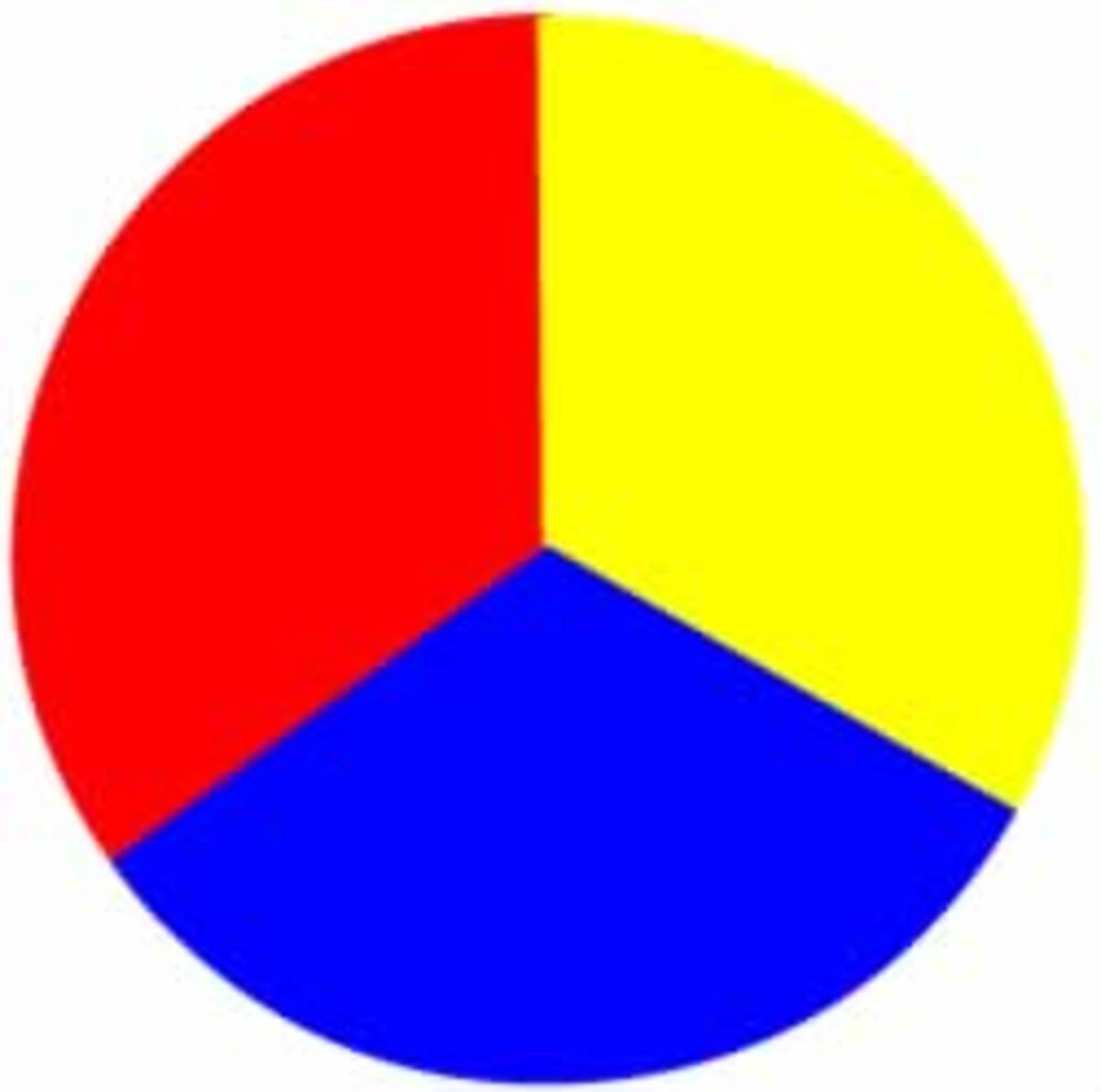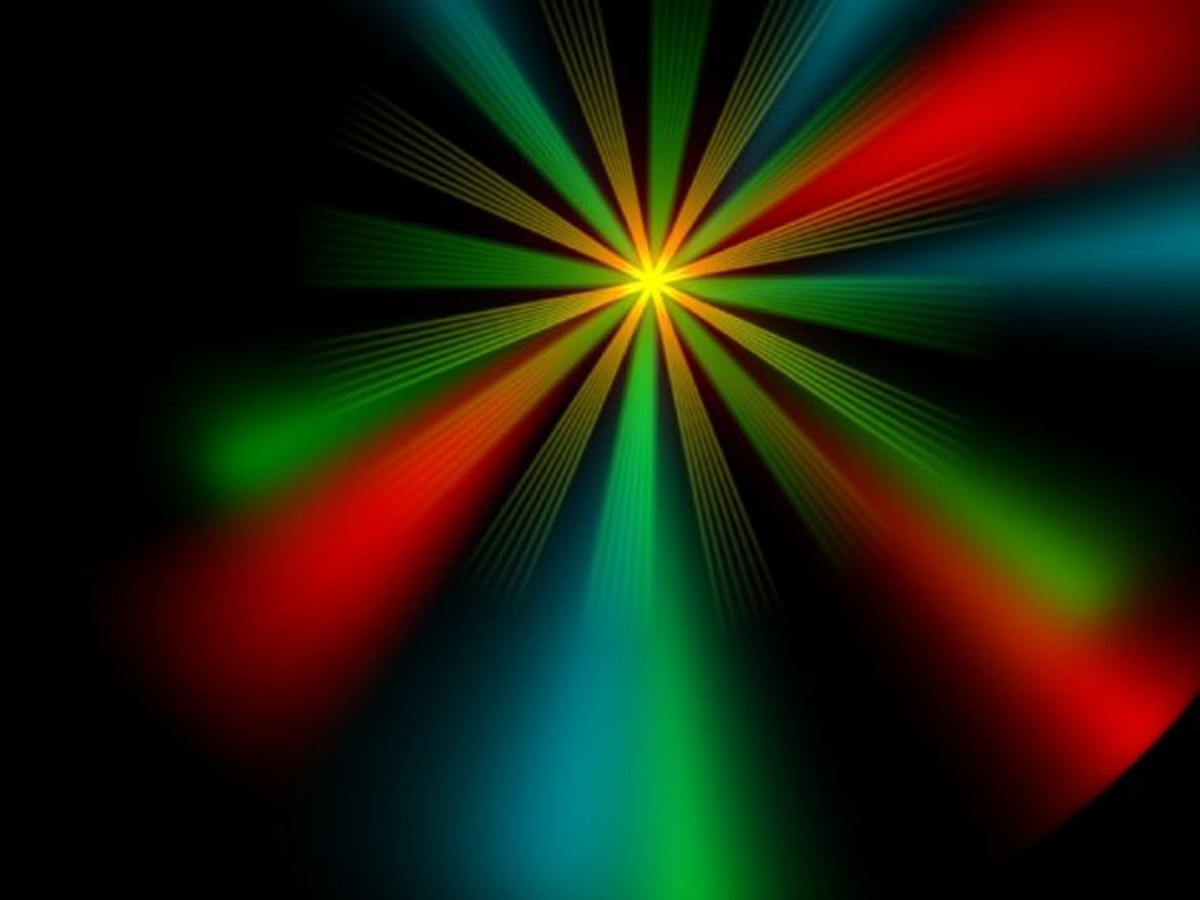Primary Colours
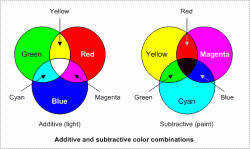
or 'Why your Teacher is wrong!'
This is a lens on what the Primary colours are, and they're not Red Blue and Yellow as you were probably taught, and my children are still being taught.
In the past these were considered the Primary colours, but in the modern world, where most people use screens all the time (which use Red Blue and Green to make all their colours) and many people have a computer printer at home (which uses Magenta, Cyan, Yellow and Black cartridges) I think its about time people knew how colours are mixed in the world around them.
This is something that always puzzled me as a kid..... Why did the TV have a red green and blue logo proudly declaring it was a colour TV displayed on the front (I am old enough for our TV to have been black and white originally, so getting a colour one was a big thing!) when the primary colours - from which all colours were made were red, blue and yellow.
This internal question was finally answered for me by a computer magazine article on colours which I read when I was about 25... Lies to children can last a long time!
Hopefully my brief explanations below and the links to more expert websites will help you find out.
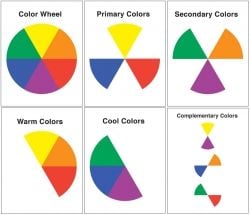
What is a Primary Colour?
Well, what I and many others will have been told at school is that the primary colours (red, blue and green) are the colours which can't be mixed from any other colours, but which can be used to mix all other colours. Am I right?
Its certainly what I was taught (and my 6 year old is presently being taught), but is it true?
The colour wheel shown here is a fairly standard representation of what is taught, but have you ever tried to reproduce it? its not quite so neat in reality, but makes sense to us because its what we've always been told - and it looks pretty!
In reality there aren't 3 colours which cannot be mixed from other colours and from which you can make all other colours. In reality colour is much more complicated, but the two sets of primary most used in day to day life now are the 'Additive Primaries' of Red, Blue and Green as used by TV's and the 'Subtractive Primaries' of Yellow, Magenta and Cyan as used by printers
For more information on these two sets read on....
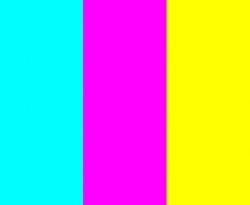
Subtactive Primaries
Print, Paint and Dye
The Subtractive Primary Colours are Cyan, Magenta and Yellow as shown here.
What does Subtractive mean? Well basically on anything printed, painted or Dyed what you are seeing is the light that is being reflected off the surface. So when something look yellow it is absorbing all of the white light that hits it except for the colour you can see. So the white light is having most of its colours taken away (or subtracted). Therefore with the subtractive colours the more you mix them together the darker they get, until you end up with a dark brown / black. Its almost impossible to actually mix black, which is why printers also use black seperately. Print process colours are Cyan (C), Magenta (M), Yellow (Y) and Black (K - so as not to be confused with Blue) known as CMYK.
A complication! - more and more commonly printers, particularily inkjets are starting to use extra colours for instance adding aREd, Blue or darker shades of Magenta and Cyan as this increases the number of shades and colours you can achieve, but the primaries are Cyan, Magenta and Yellow.
There are several more comprehensive explanations in the links list section below.
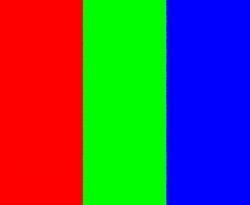
Additive Primaries
Lights, Screens, Projectors.....
The Additive Primary Colours are Red, Green and Blue as shown here.
What does Addittive mean? Well basically on anything that produces light what you are seeing is wave lenghts of light. So when something look yellow it is a combination of Red and Green light (I know this sounds really weird - you make yellow from red and green? but really you do - try it with a red and a green filtered torch). So the coloured lights are combining (or in other words adding). Therefore with the additive colours the more you mix them together the lighter they get, until you end up with white. This is why TV's and computer monitors, projectors, phone screens etc. use Red Green and Blue as their primary colours.
A complication! - more and more commonly TV's etc are starting to use extra colours for instance adding Yellow, as this increases the number of shades and colours you can achieve, but the primaries are Red, Blue and Green.
There are several more comprehensive explanations in the links list section below.
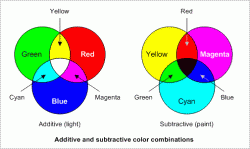
Secondary Colours
So what about the secondary colours?
I expect most people if asked would say orange purple and green, but as you've probably worked out by now they aren't...
In fact the secondary colours of one system are the primary colours of the other.
So the Additive primaries are Red, Blue and Green and the secondary are Cyan, Magenta and Yellow
and the Subtractive Primaries are Cyan, Magenta and Yellow and the Secondaries are Red, Blue and Green.
Links to better written articles on Primary colours - and colour theories.
Here are some links to 'proper' websites about Primary Colours, What they are, Why they are etc.
- Hyperphysics website
"Almost all visible colors can be obtained by the additive color mixing of three colors that are in widely spaced regions of the visible spectrum. If the three colors of light can be mixed to produce white, they are called primary colors and the stan - Comparison of color models in computer graphics
"This article provides introductory information about the RGB, HSV, and HSL color models from a computer graphics (Web page, image) perspective. An introduction to colors is also provided to support the main discussion." - Wikipedia 'Primary Colours' page
"Primary colours are sets of colours that can be combined to make a useful range of colours. For human applications, three primary colours are usually used, since human colour vision is trichromatic." - Wikipedia 'Color'
"Color or colour (see spelling differences) is the visual perceptual property corresponding in humans to the categories called red, blue, yellow, green and others. Color derives from the spectrum of light (distribution of light power versus wavelengt
Probably wrong books on colour at Amazon
A random selection of books on Amazon with color in the title.....


